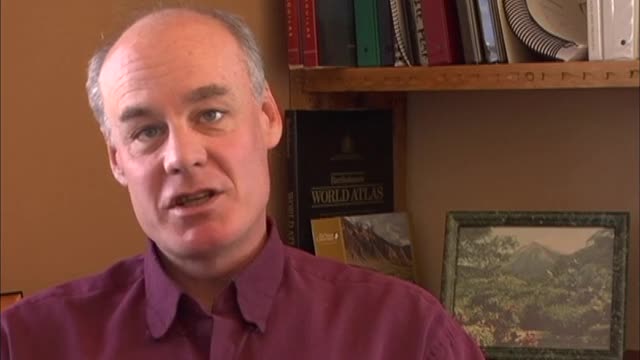Artisode; Dance of the Prairie Chicken

- Transcript
Lessor Prairie Chicken is a species of bird that lives in a small segment of the North American grasslands in eastern New Mexico and western Kansas and western Oklahoma. It's quite a unique species. It's a member of the Grouse family and so as such it has quite an interesting personality. It's a ground dwelling bird and unfortunately the population of Lessor Prairie Chicken has declined really rapidly over the last 100 years or so. Because of what we as a society have chosen to use our grasslands for, the grasslands are the bread basket of North America and as such we've seen extensive conversion of the grasslands for agricultural crops. There's a lot of oil and gas activity that have occurred in the grasslands particularly in southeastern New Mexico and so as a result we've
had this enormous habitat loss and without that appropriate habitat the Lessor Prairie Chicken hasn't been able to breed and reproduce so their population has dropped by about 97% in the last 100 years. We're fortunate in New Mexico and eastern New Mexico because we have one of the largest remaining populations of Lessor Prairie Chicken. The reasons for that huge population still existing there are essentially because that habitat is largely intact although it's still highly threatened. We have what's called a shinry oak grassland system there that gives the birds a little bit of cover so that they can lay their eggs in the nests on the ground and basically the area has not been developed in the same way that other areas in Kansas and Nebraska and Oklahoma have in terms of the intensive agricultural development. The Prairie Chicken's breeding period runs from around mid-April until about mid-May or so so it's about a month-long period during which the
birds congregate in these open areas called Lex and a Lex is an open area where the males can come in and basically try to pick up a date from a female who's walking around the perimeter and there's generally a much greater concentration of males than females. There are 10 or so males for every female. As such the males are in a highly competitive mode and so the female walks into the lack and the males get all excited and they start bouncing off each other and jumping and puffing and essentially if the male is successful in breeding with the female the female will go off and lay eggs and the female lays up to 13 eggs of which most will hatch within the next two or three weeks and unfortunately though through natural predation et cetera only usually one or two of those hatchlings will actually survive. Well if we lost the lesser Prairie Chicken I think probably the ecosystem wouldn't collapse in and of itself certainly it is a source of food for some
of the local predators but really I think as much as anything the lesser Prairie Chicken is an incredible symbol or icon of our prairies in our grasslands of North America and so I think as much as anything it would be just a tremendous loss for us as a society and for our culture to lose yet another just amazingly charismatic species that really once just was dominant in the grasslands of North America.
- Series
- Artisode
- Episode
- Dance of the Prairie Chicken
- Producing Organization
- KNME-TV (Television station : Albuquerque, N.M.)
- Contributing Organization
- New Mexico PBS (Albuquerque, New Mexico)
- AAPB ID
- cpb-aacip-ac5266318bf
If you have more information about this item than what is given here, or if you have concerns about this record, we want to know! Contact us, indicating the AAPB ID (cpb-aacip-ac5266318bf).
- Description
- Episode Description
- Prairie Chickens live in grasslands like Eastern New Mexico and parts of Kansas. This segment features the footage these birds live in, the birds themselves, habitat loss concerns, and how this affects the birds.
- Asset type
- Episode
- Genres
- Miniseries
- Media type
- Moving Image
- Duration
- 00:03:53.396
- Credits
-
-
Producer: Wakshull, Deborah
Producing Organization: KNME-TV (Television station : Albuquerque, N.M.)
- AAPB Contributor Holdings
-
KNME
Identifier: cpb-aacip-95748761ced (Filename)
Format: XDCAM
If you have a copy of this asset and would like us to add it to our catalog, please contact us.
- Citations
- Chicago: “Artisode; Dance of the Prairie Chicken,” New Mexico PBS, American Archive of Public Broadcasting (GBH and the Library of Congress), Boston, MA and Washington, DC, accessed July 31, 2025, http://americanarchive.org/catalog/cpb-aacip-ac5266318bf.
- MLA: “Artisode; Dance of the Prairie Chicken.” New Mexico PBS, American Archive of Public Broadcasting (GBH and the Library of Congress), Boston, MA and Washington, DC. Web. July 31, 2025. <http://americanarchive.org/catalog/cpb-aacip-ac5266318bf>.
- APA: Artisode; Dance of the Prairie Chicken. Boston, MA: New Mexico PBS, American Archive of Public Broadcasting (GBH and the Library of Congress), Boston, MA and Washington, DC. Retrieved from http://americanarchive.org/catalog/cpb-aacip-ac5266318bf